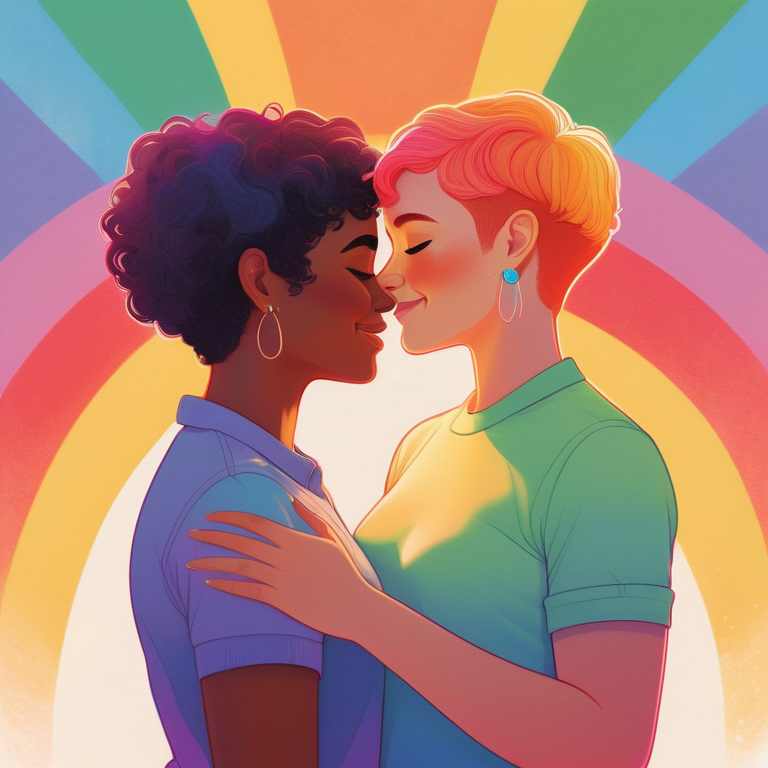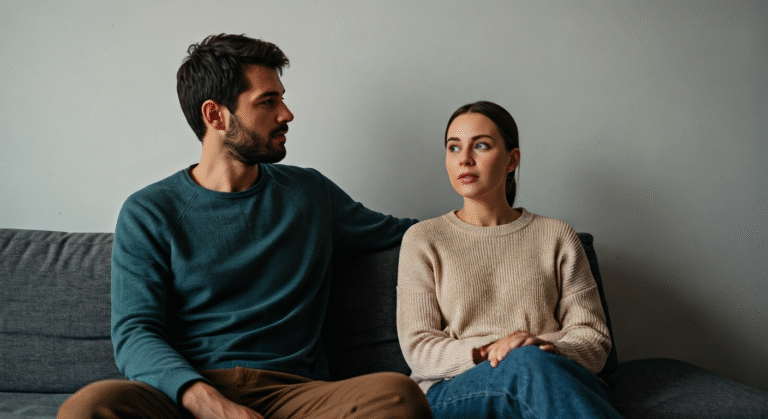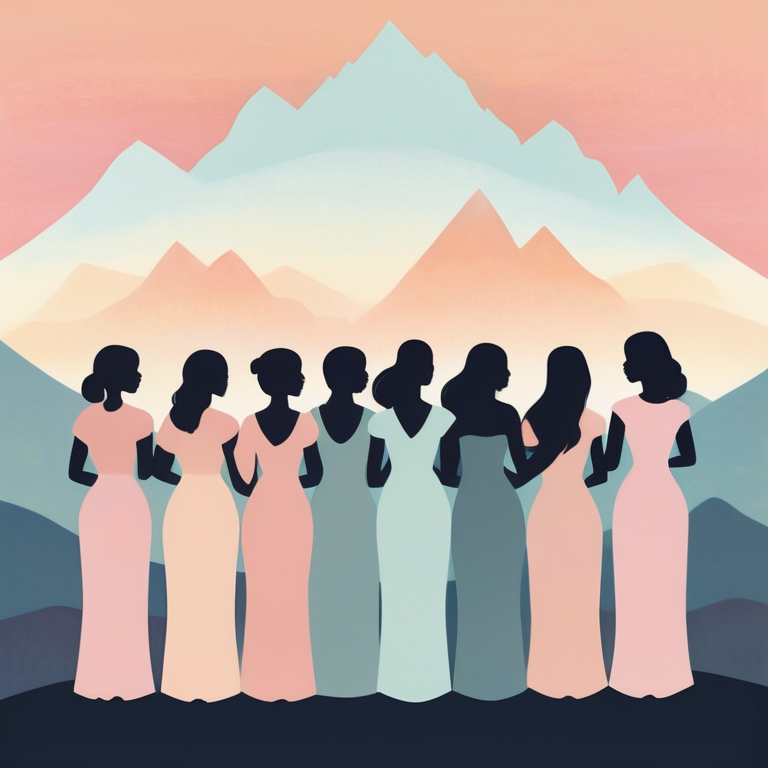Celebrating Queer Women’s Diverse Sexualities

Key Highlights
- Queer women’s sexualities are diverse and encompass a wide range of identities, orientations, and attractions.
- Lesbian identities within the queer community are rich and varied, reflecting different experiences of sexual attraction.
- Bisexual women experience fluidity in attraction, being attracted to both men and women, and have different preferences in terms of sexual behavior and romantic attraction.
- Pansexual individuals are attracted to people regardless of their gender identity, challenging the traditional binary understanding of sexuality.
- Asexual and aromantic experiences are valid within the queer community, highlighting the importance of recognizing and understanding different types of attraction.
- Questioning individuals navigate sexual uncertainty and may find solace in the umbrella term of “queer” as they explore their own feelings and identity.
Introduction
In today’s society, it is important to recognize and celebrate the diverse sexualities within the queer community. Queer women, in particular, have a vast range of sexual orientations, gender identities, and romantic preferences that contribute to the rich tapestry of the LGBTQIA+ community. Understanding and embracing these diverse sexualities, including those within the LGBTQ+ spectrum, is crucial for creating inclusive spaces and fostering a sense of belonging for all queer women and their queer identity.
From lesbian identities to bisexual and pansexual perspectives, asexual and aromantic experiences, and the challenges faced by non-binary and genderqueer individuals, the spectrum of queer women’s sexualities is vast and nuanced. By exploring and appreciating this diversity, we can challenge heteronormative norms and create a more inclusive and accepting society.
In this blog, we will delve into the different aspects of queer women’s sexualities, providing insights into the various identities, orientations, and attractions that make up this vibrant community. We will also discuss the importance of inclusivity in queer spaces, the impact of intersectionality on sexual identity, and the challenges faced by queer women in navigating societal barriers and celebrating their diverse sexualities. Let us celebrate and embrace the beautiful complexity of queer women’s sexualities together.
Exploring the Spectrum of Queer Women’s Sexualities
Queer women’s sexualities encompass a wide range of identities, orientations, and attractions. From lesbian to bisexual, pansexual to asexual, and everything in between, the spectrum of queer women’s sexualities reflects the diversity of human experiences in the United States. Sexual orientation refers to a person’s enduring pattern of emotional, romantic, and/or sexual attractions to femininity, masculinity, both genders, or neither. Gender identity refers to a person’s deeply felt sense of being male, female, or something else, and may or may not align with the sex assigned at birth. Romantic orientation identifies a person’s capacity for romantic attraction and emotional connection to others of the opposite sex. Sexual diversity also includes asexual people, who feel disinterest in sexual activity, and all those who consider that their identity cannot be defined, such as queer people. With these three aspects in mind, let us explore the rich tapestry of queer women’s sexualities in the United States.
The Rich Tapestry of Lesbian Identities
Lesbian identities are an integral part of the queer community, representing a diverse range of experiences of sexual attraction. Lesbian individuals are women who are primarily or exclusively attracted to other women. This attraction may be emotional, romantic, and/or sexual in nature. Some nonbinary individuals may also identify as lesbians, as they may feel a closer connection to womanhood and are mainly attracted to women. Being a lesbian is not solely defined by sexual behavior, but rather by a deep and enduring attraction to women.
Within the lesbian community, there is a wide range of identities and experiences. Some lesbians may identify as butch or femme, embracing traditional gender roles or stereotypes. Others may reject these labels, preferring to express themselves in more fluid or non-conforming ways. Lesbian relationships can manifest in various forms, from monogamous partnerships to polyamorous arrangements. It is important to recognize and celebrate the diversity within lesbian identities and to create inclusive spaces where all lesbian individuals feel welcome and understood.
Bisexual Women and Fluidity in Attraction
Bisexual women have the capacity to experience attraction to both men and women. Bisexuality is not limited to equal or symmetrical attraction to both genders; it can encompass a wide range of preferences and attractions. Some bisexual women may experience a stronger attraction to one gender over another, while others may have fluid attractions that change over time. Bisexual women may also have different preferences in terms of sexual behavior and romantic attraction. It is important to recognize and validate the experiences of bi women, as they navigate the complexities of their attractions and identities. Providing support and creating inclusive spaces for bi women can help foster a sense of belonging and acceptance within the queer community.
Pansexual Perspectives: Beyond the Binary
Pansexual individuals are attracted to people regardless of their gender identity, challenging the traditional binary understanding of sexuality. Pansexuality is characterized by an attraction to people regardless of their gender or sex assigned at birth. Pansexual individuals may experience attraction to men, women, non-binary individuals, and those who identify outside of the gender binary, embracing and celebrating diverse expressions of masculinity. This inclusivity reflects a rejection of the gender binary and a celebration of gender diversity. Pansexual perspectives offer a unique insight into the fluidity and complexity of sexual attraction, highlighting the importance of embracing and understanding diverse sexualities. By recognizing and validating pansexual experiences, we can foster a more inclusive and accepting society for all queer individuals.
Asexual and Aromantic Experiences within the Queer Community
Asexual and aromantic experiences are valid and important within the queer community. Asexuality refers to a lack of sexual attraction to anyone, while aromanticism describes a lack of romantic attraction. Asexual and aromantic individuals, also known as asexual people, may still experience emotional and platonic connections with others, but do not experience sexual or romantic attraction in the same way as others. However, it is important to acknowledge that some asexual individuals may still experience sexual feelings, which can be satisfied through self-stimulation or masturbation. This diversity within asexuality is known as libidoist asexuality. It is crucial to recognize and understand asexual and aromantic experiences, as they challenge societal norms and highlight the diversity of human sexuality. Creating inclusive spaces and providing support for asexual and aromantic individuals is crucial for fostering a sense of belonging and acceptance within the queer community.
Queer and Questioning: Navigating Sexual Uncertainty
Questioning is an umbrella term used to describe individuals who are uncertain about their sexual orientation or gender identity. It is a natural part of the journey for many individuals as they explore and discover their own feelings and identity. Questioning individuals may be unsure about their attractions, preferences, or identities, and may seek support and guidance as they navigate this uncertainty within the LGBT movement in the 1990s. It is important to create safe and inclusive spaces for questioning individuals, where they can explore and express their feelings without fear of judgment or prejudice from members of the LGBT community. Embracing the umbrella term of “queer” can provide a sense of community and acceptance for those who are questioning, as they navigate their own unique experiences and discover their own truth through the acronym LGBTQ+ and the symbol of the rainbow.
Polyamorous Relationships and Queer Women
Polyamorous relationships, characterized by consensual non-monogamy, are an important aspect of the queer community. Polyamory refers to the practice of having multiple intimate relationships at the same time, with the knowledge and consent of all involved. Queer women may choose to engage in polyamorous relationships, exploring different attractions and connections with individuals of different genders. Polyamory challenges traditional notions of monogamy and provides a framework for embracing the complexities of human relationships and attractions. It is important to recognize and validate the experiences of queer women in polyamorous relationships, providing support and understanding within the queer community.
Non-Binary and Genderqueer Sexualities
Non-binary and genderqueer individuals have diverse sexualities that reflect their unique experiences and identities. Non-binary refers to individuals who do not identify exclusively as male or female, while genderqueer encompasses individuals who identify outside of the gender binary. Non-binary and genderqueer individuals may experience a range of attractions, including but not limited to, same-gender, different-gender, and non-binary attractions. It is important to create inclusive spaces and recognize the validity of non-binary and genderqueer sexualities, including those of intersex people, within the queer community. By embracing and understanding these diverse experiences, we can foster a more inclusive and accepting society for all queer individuals.
The Intersection of Trans Identity and Queer Women’s Sexualities
The intersection of trans identity and queer women’s sexualities highlights the complexity and diversity of human experiences. Transgender people, including trans women, can have a range of sexual orientations and attractions. Trans women may identify as lesbian, bisexual, pansexual, or any other sexual orientation that reflects their personal experiences and attractions. It is crucial to recognize and validate the experiences of transgender individuals within the queer community, creating inclusive spaces where all individuals feel welcome and understood. By embracing the intersectionality of trans identity and queer women’s sexualities, we can challenge stereotypes and promote acceptance and understanding within the LGBTQIA+ community. Additionally, as the LGBTQIA+ community continues to fight for equality and visibility, it is important to acknowledge and address the unique challenges and experiences of trans people within this community.
Understanding Genderqueer and Non-Binary Experiences
Genderqueer and non-binary individuals challenge traditional gender norms and identities, embracing a more fluid understanding of gender. Genderqueer refers to individuals who identify outside of the gender binary, while non-binary encompasses individuals who do not exclusively identify as male or female. Understanding and accepting genderqueer and non-binary experiences, including the experiences of cisgender individuals, is crucial for creating inclusive spaces and fostering a sense of belonging within the queer community. By challenging traditional gender norms and embracing gender diversity, we can promote acceptance and understanding for all individuals, regardless of their gender identity or expression.
Breaking Down Gender Norms in Sexuality
Gender norms play a significant role in shaping societal expectations around sexuality. Traditional gender norms dictate how individuals should behave and express their sexuality based on their assigned sex at birth. However, these norms can be restrictive and limit the exploration of diverse sexualities and attractions. Breaking down gender norms in sexuality involves challenging and redefining these expectations, creating space for individuals to express their desires and attractions authentically. By promoting a more inclusive understanding of gender and sexuality through the lens of gender studies, we can foster acceptance and understanding for all individuals, regardless of their gender expression or sexual orientation.
The Role of Genderfluidity in Queer Women’s Lives
Genderfluidity refers to individuals whose gender identity and expression may vary over time. For genderfluid individuals within the queer community, this fluidity can also extend to their sexual attractions and preferences. Genderfluid individuals may experience attractions that vary depending on their gender identity at a given moment. It is important to recognize and validate the experiences of genderfluid individuals and create inclusive spaces where they can freely express their gender and sexual identities. By embracing and understanding genderfluidity, we can challenge rigid notions of gender and sexuality and promote acceptance within the queer community.
The Importance of Inclusivity in Queer Spaces
Inclusivity is crucial in creating safe and supportive environments for queer individuals. Queer spaces should be welcoming and accepting of all sexual orientations, gender identities, and expressions. Inclusive spaces recognize and celebrate the diversity of experiences within the queer community, providing support and understanding for all individuals. By fostering inclusivity, we can challenge discrimination and prejudice, promoting a sense of belonging and empowerment for all queer individuals. Creating inclusive queer spaces is essential for building a stronger and more accepting community.
Creating Safe Spaces for All Queer Women
Creating safe spaces for all queer women is essential for fostering a sense of belonging and acceptance. Safe spaces provide environments where queer individuals can freely express their identities and experiences without fear of judgment or discrimination. These spaces should prioritize inclusivity and respect, recognizing the diversity of sexual orientations, gender identities, and expressions within the queer community. By creating safe spaces, we can encourage open dialogue, provide support and resources, and promote a sense of community and empowerment for all queer women.
The Impact of Intersectionality on Sexual Identity
Intersectionality refers to the interconnected nature of social categorizations such as race, gender, and sexual orientation, which can create overlapping and unique experiences of discrimination and privilege. Understanding the impact of intersectionality on sexual identity is crucial for creating inclusive spaces within the queer community. Intersectionality recognizes that an individual’s experiences of discrimination and privilege are shaped by the intersection of multiple identities. By acknowledging and addressing the intersecting oppressions faced by queer women, we can work towards a more equitable and inclusive society that celebrates the diversity of sexual identities and experiences.
Navigating Challenges and Celebrating Diversity
Navigating challenges and celebrating diversity are crucial aspects of fostering an inclusive and accepting society for all queer individuals. The queer community faces various challenges, including societal barriers, prejudice, and misconceptions. It is important to address these challenges and promote understanding and acceptance within society. Celebrating diversity involves recognizing and valuing the unique experiences and identities within the queer community, creating spaces where all individuals feel seen, heard, and respected. By navigating challenges and celebrating diversity, we can work towards a more inclusive and equitable society.
Overcoming Societal Barriers to Queer Expression
Overcoming societal barriers to queer expression is crucial for creating a more accepting and inclusive society for lgbt people. Prejudice and discrimination based on sexual orientation and gender identity, also known as homophobia and transphobia, can limit the freedom of queer individuals to express their authentic selves. Breaking down these barriers involves challenging heteronormativity and cisnormativity, promoting education and awareness, and advocating for equal rights and protections for all individuals, including queer people and their human rights. By striving for inclusivity and acceptance through the lens of queer theory, we can celebrate the diverse sexualities of queer women and create a society where they can freely express their identities and experiences without fear of prejudice or discrimination.
The Power of Visibility and Representation
Visibility and representation play a significant role in validating the experiences of queer women and promoting acceptance within society. Seeing positive and authentic portrayals of queer women in media, literature, and other forms of representation can have a powerful impact on individuals’ self-esteem and sense of belonging. It is important to amplify the voices and stories of queer women, providing a platform for their experiences and perspectives. By increasing visibility and representation, we can challenge stereotypes, break down barriers, and promote understanding and acceptance for all queer individuals.
Celebrating Success Stories within the Queer Women’s Community
Celebrating success stories within the queer women’s community is a powerful way to acknowledge and uplift the achievements and resilience of queer individuals. Pride parades, LGBTQIA+ organizations, and community events in New York City provide opportunities to celebrate the progress made in advancing LGBTQIA+ rights and acceptance. Success stories within the queer women’s community highlight the strength, courage, and determination of individuals who have overcome challenges and made a positive impact on society, including in countries like Australia where the use of the identifier queer and Q is widespread. By celebrating these stories, we can inspire others, foster a sense of pride and empowerment, and build a stronger and more inclusive queer community.
Conclusion
As we celebrate the diverse sexualities of queer women, it’s crucial to understand and honor the rich tapestry of lesbian identities, fluidity in attraction among bisexual women, and perspectives beyond the binary with pansexual experiences. Asexual and aromantic individuals within the queer community, alongside those navigating uncertainties, contribute to the vibrant spectrum. Embracing inclusivity, creating safe spaces, and highlighting success stories are vital steps toward acceptance and understanding. Let’s break down barriers, elevate visibility, and celebrate the resilience and beauty of diverse queer women’s sexualities. Share this knowledge on social media to further promote inclusivity and support in our communities.
Frequently Asked Questions
What Does It Mean to Be Queer and Non-Binary?
Being queer and non-binary means identifying outside of the traditional gender binary and embracing a fluid or nonconforming understanding of gender. Queer is an umbrella term that encompasses a diverse range of sexual orientations and gender identities.
How Can I Support a Friend Exploring Their Sexuality?
Supporting a friend exploring their sexuality involves listening without judgment, providing a safe and non-judgmental space, and offering resources and support. It is important to respect their journey and offer support in their self-discovery.
Are There Resources for Queer Women in Conservative Areas?
Yes, there are resources available for queer women in conservative areas. Online communities, LGBTQIA+ organizations, and national helplines can provide support and resources for queer women facing challenges in conservative environments.
How Do Different Cultures View Queer Women’s Sexualities?
Different cultures have varying perspectives on queer women’s sexualities. Cultural norms, religious beliefs, and social attitudes can influence how queer women’s sexualities are understood and accepted within different cultural contexts.
What Are Some Common Misconceptions About Queer Women’s Sexualities?
Common misconceptions about queer women’s sexualities include assuming that all queer women are the same and that their sexualities are a phase or a choice. It is important to challenge these stereotypes and understand the diversity within the queer women’s community.
How Can Queer Women Navigate Dating and Relationships?
Queer women can navigate dating and relationships by communicating openly and honestly, setting boundaries, and seeking support from LGBTQIA+ communities and organizations. It is important to prioritize self-care and find spaces where queer women feel safe and accepted.
Where Can Queer Women Find Community and Support?
Queer women can find community and support through LGBTQIA+ organizations, online forums, social media groups, and local community centers. These spaces provide opportunities to connect with others who share similar experiences and offer resources and support.





